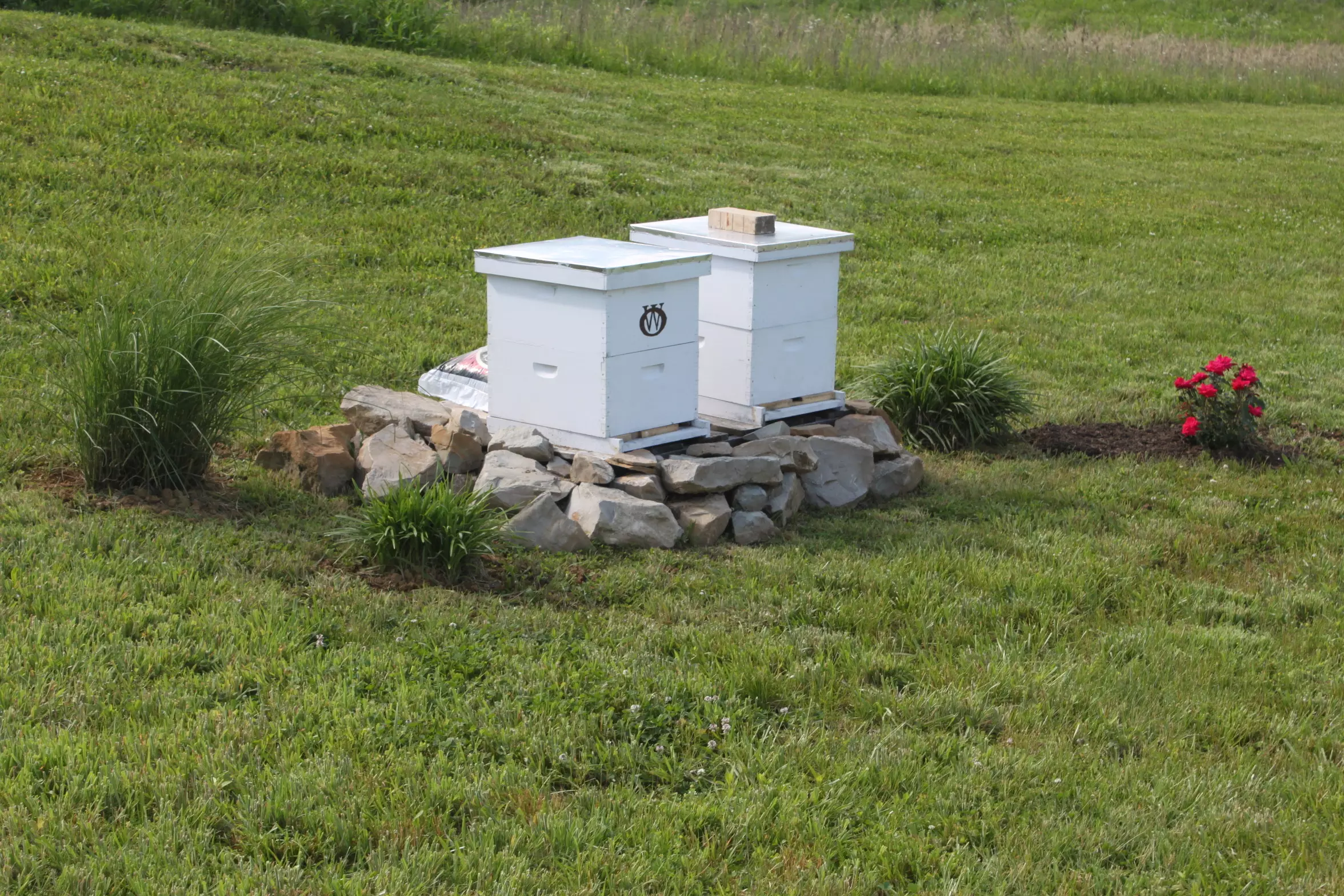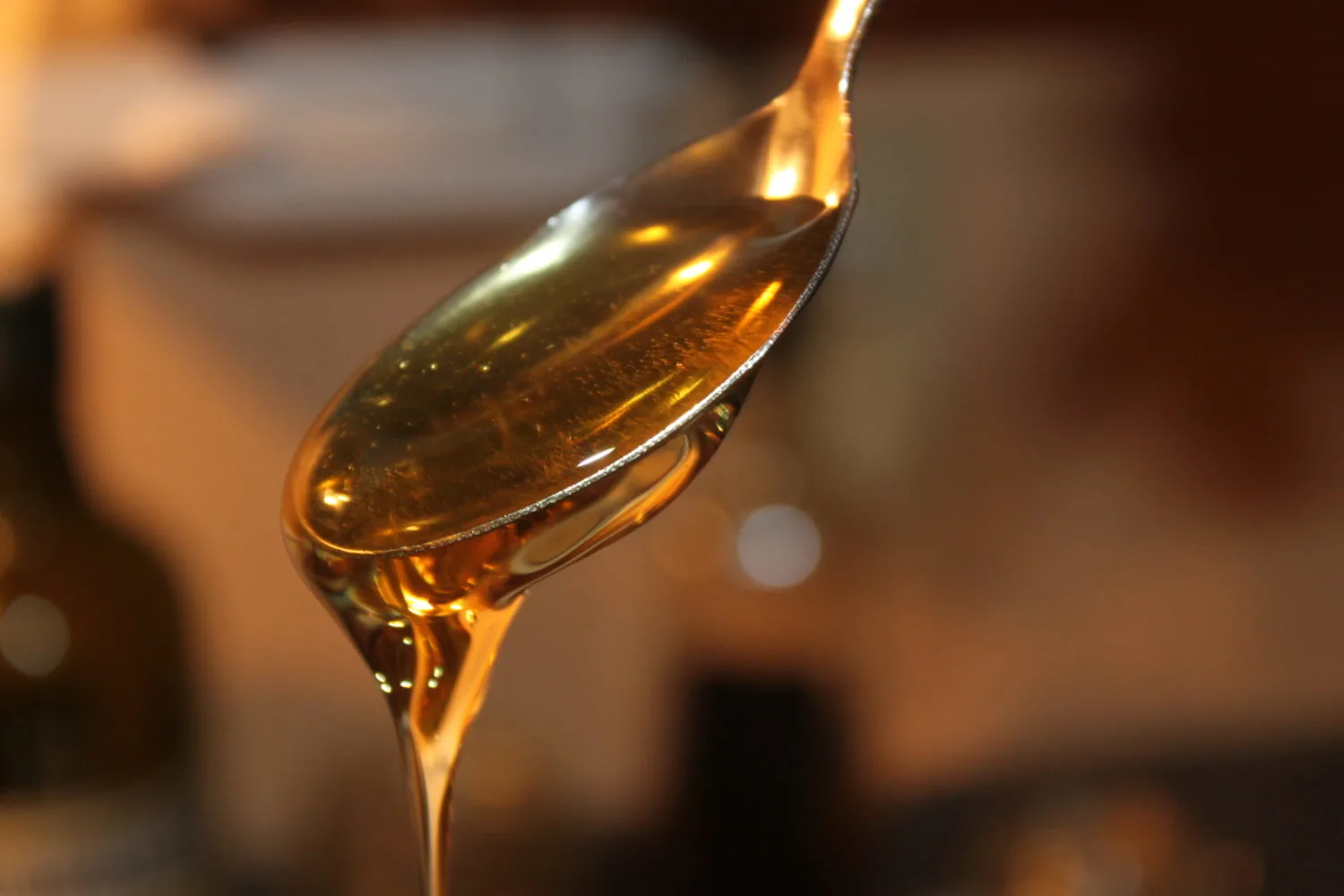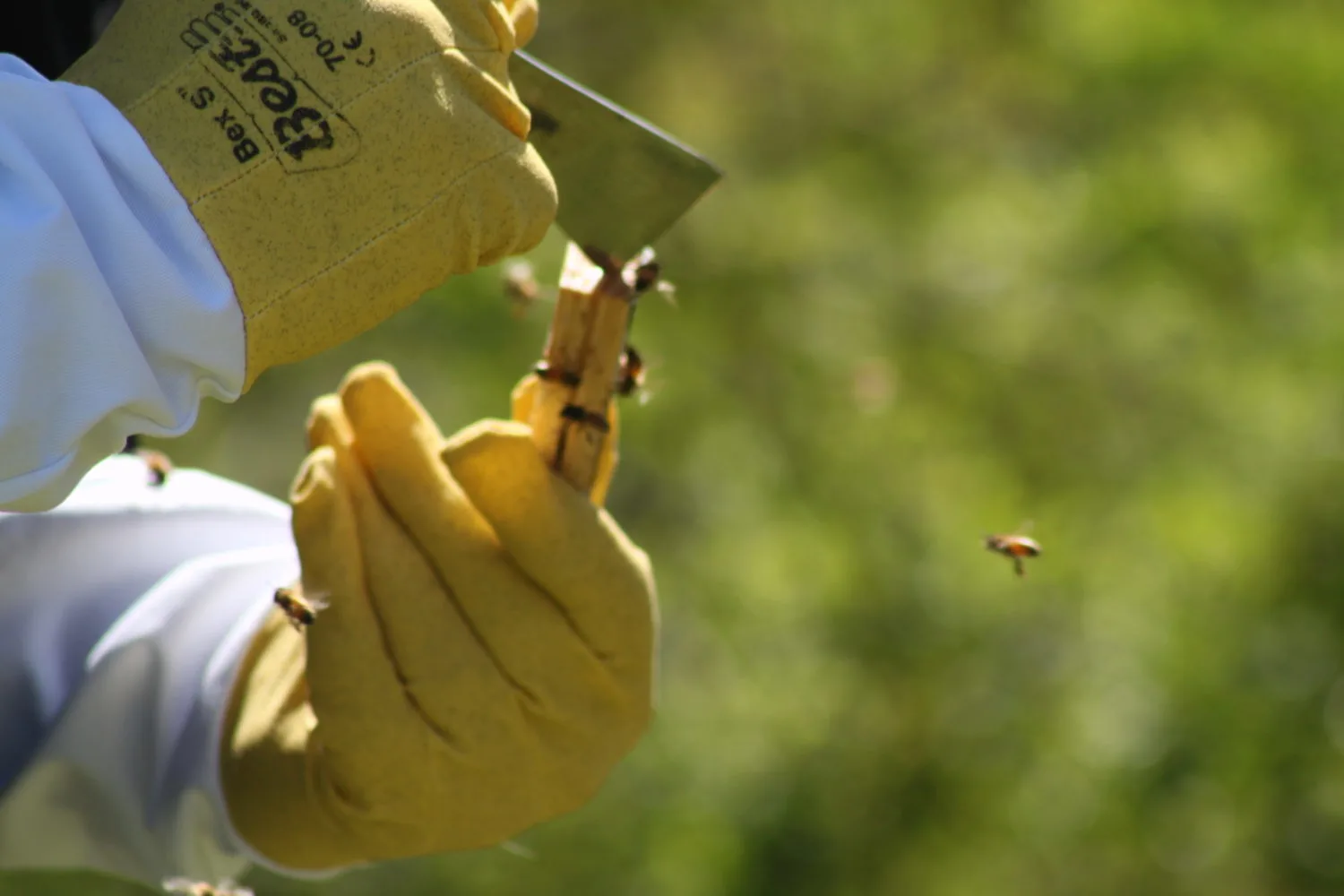No matter how hard we work, or how many hours Mary and I might put into our chores, we can never come close to matching the work level of our honey bees at the farm.
Our two hives, and the thousands upon thousands of honey bees that inhabit them, are quite simply an amazing sight to behold.
More and more people are wanting and learning to keep hives – and it couldn’t come at a better time. Bees are in decline – and anything that can be done to help them come back is a plus for the entire world.
Without bees, a large portion of our world’s food supply would simply disappear.
Here at our own little OWG farm, they play an incredibly important role as well – helping to pollinate all of our fruit trees, grapes, blackberries, strawberries, flowers, and of course, our vegetable garden.
And then there is the honey! Honey is a main ingredient in our strawberry honey jam and blackberry honey jam, homemade granola crunch cereal, whole wheat bread – and many other recipes we consume on a regular basis.
Throw in that a teaspoon of our own honey in our morning coffee seems to eliminate any issues with seasonal allergies – and the bees simply rule!
We thought for today’s Sunday Farm update – we would share some amazing facts about the hardest workers at our farm – and maybe help inspire a few more future beekeepers in the process.
5 Amazing Honey Bee Facts
Bees Never Sleep: Although they will stay stationary in the overnight hours to conserve energy for flying each day, bees never sleep. The hive is a bustling center of activity – with the Queen laying eggs, and the worker bees performing all kinds of ongoing cleaning and food storing activities.
Worker bees literally work themselves to death – living an average of only about 35 to 40 days in the middle of the spring, summer and fall “busy” seasons.
Bees Are Great Dancers : So, no – they do not play music in their hives and keep the neighbors up late at night. But bees do have their own dance – and it amazing to behold.
Bees will travel up to 2 miles in any direction from their hive to find food – and upon returning to the hive, it is by dance that they show the others where to head for the goods.
It is known as the “waggle dance,” and it is a combination of circle movements and abdomen twitches by the worker bee that then draws a map for the others to head out to find the new treasure of food.
The 6 -5 -4 of Bees : For being such small creatures, bees have a lot of built in equipment to help them keep their colony and hive healthy. Bees have 6 legs, 5 eyes, and 4 wings.
The 6 legs of the bees are divided up into 3 separate pairs. The front pair is used to help keep the bee’s antenna clean, the middle pair helps with overall stability and the rear pair is used for storing pollen when out foraging for food.
A bee has 5 eyes to help it navigate the world at optimum speed – two large compound eyes that most can recognize easily, and three smaller eyes in the center of it’s head as well.
Finally, the bee has a total of 4 wings (a front set and back set) for helping with flight control. The two sets actually come together to form one big set of wings when the bee is in flight, and then come apart for them to move around better when back at the hive.
The Male Honey Bee
The women rule when it comes to bees. Not only does the Queen receive all of the attention – but the females make up nearly the entire hive. The male bee’s only use to the hive is for mating, and the Queen only mates once in her life.
Other than that – they are fairly useless to the success of the hive. In fact, each fall, the female worker bees will push the males out of the hive to die – not wanting to allow them to use up their precious food reserves for the coming winter. (One of the reasons I make sure Mary knows that this male works very hard at the farm 🙂 )
The Built In Furnace and Air Conditioner For Beehives
Honey bees are cold-blooded – so they like their heat. In the hive – they use the beating of their wings to keep the climate temperature controlled.
In the summer – the inside temperature will average in the mid-90’s – and – if it gets too hot outside, they can use those same wings to provide a little air conditioning to keep the temperature constant.
Bees do not hibernate in the winter – but they will ball up and form a living cluster. They use the beating of their wings to keep the temperature right around the 80 degree mark – and only fly out of the hive on days when the outside temperature climbs above 50 degrees.
Honey bees are amazing creatures for sure, and our two hives provide a lot of enjoyment and productivity to our farm’s little habitat!
We hope you enjoyed this week’s Sunday Farm Update, if you haven’t had a chance yet, be sure to check out our new book Growing Simple – now available on Amazon.com, it is now available in both paperback and ebook.
If you would like to receive our Recipes, DIY and Gardening articles each week, you can sign up to follow the blog via email in the right hand column above, “Like” us on Facebook, or follow us on Twitter.
Happy Gardening! Jim and Mary




